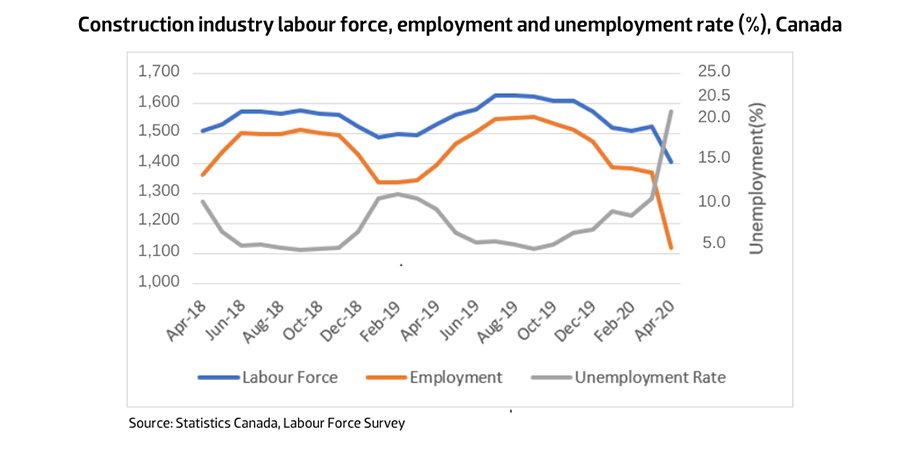Statistics Canada’s April Labour Force Survey (LFS) landed May 8th with sobering news for the Canadian economy in general, and the construction industry in particular, as the COVID-19 shutdown continued to tear through employment numbers.
According to the April LFS, the economy has shed more than three million workers as a result of the COVID-19 pandemic – two million in April alone. The number of people employed but working less than half their usual hours increased by 2.5 million from February to April. The number of Canadians either not employed or working substantially reduced hours was 5.5 million – more than one-quarter of February’s employment level. A 15.7% decline in employment since February is unprecedented among Canadian labour market downturns and will have significant repercussions in squelching consumer demand.
For the construction industry, the April 2020 unemployment rate reached 20.5% – more than double the 10.1% level reached in March. The industry lost 249,300 jobs in April, bringing the total employment decline since February to 266,100 – a total 24% decline. Canada’s two largest construction workforces were hardest hit since February, with 94,000 jobs lost in Quebec and 91,200 in Ontario. Most of those jobs were lost between March and April: 93,100 in Quebec and 81,800 in Ontario. Alberta, representing the country’s fourth largest construction labour force, experienced a decline of 31,000 workers during that period.


